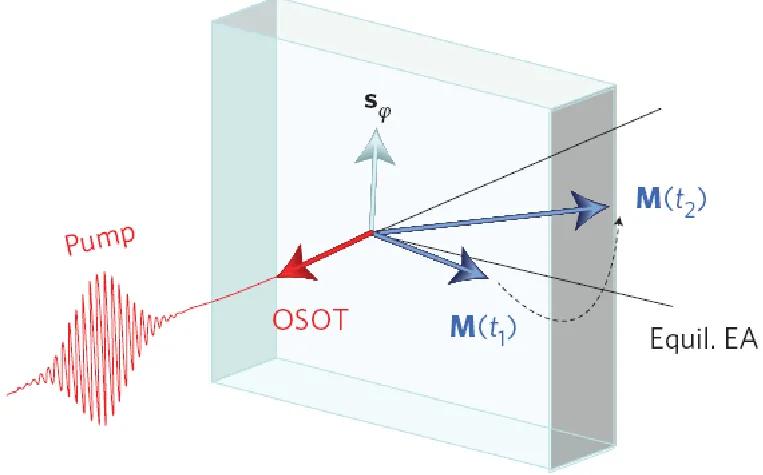The preparation of high-quality nano-scale films of ferromagnetic semiconductors is a formidable challenge. If successful, it would inevitably provide unprecedented grounds for exploring new physical phenomena arising from the interaction of photons with magnets and may suggest new means for the manipulation of magnets in opto-electronic devices at sub-picosecond time scales.
The synthesis of prime quality films of ferromagnetic semiconductor (Ga,Mn)As and the discovery of a relativistic effect allowing to manipulate spins in the nano-scale magnet by short laser pulses was reported by scientists from the Joint Laboratory of Opto-Spintronics at the Faculty of Mathematics and Physics, Charles University and the Institute of Physics, Academy of Sciences of the Czech Republic. The first part of the work was published on January 29, 2013, in the journal Nature Communications (DOI: 10.1038/ncomms2426) and a second part on April 21, 2013, in the journal Nature Photonics (DOI: 10.1038/NPHOTON.2013.76). The work is follow up of another recent discovery in the field of the manipulation of magnets by light by the researchers from the Joint Laboratory of Opto-Spintronics which was published in 2012 in the journal Nature Physics (DOI: 10.1038/NPHYS2279).
Electrical current can induce a rotation of the magnetization vector in a ferromagnet due to a relativistic spin-orbit coupling effect and this recently discovered phenomenon is called the spin-orbit-torque. Apart from its intriguing basic physics nature, it is now extensively explored as new means for writing information in magnetic random access memories whose development is expected to result in the construction of instant on-and-off computers. The timescales for exciting magnetization by the current induced spin-orbit-torque are nanoseconds. Physicists from the Joint Laboratory of Opto-Spintronics observed an optical variant of the phenomenon, the so-called optical spin-orbit-torque, in which magnetization is excited in a magnetic semiconductor by photo-carriers at timescales which are several orders of magnitude shorter.
„Our work combines relativistic quantum-mechanics with the photo-effect, a phenomenon which is at the very heart of semiconductor opto-electronics, and with the spin-torque which is the key phenomenon for spintronics and magnetic memories. We have, therefore, built a new bridge between basic physics and these two modern fields of research in microelectronics,“ say Petr Němec and Tomáš Jungwirth from the Joint Laboratory of Opto-Spintronics.
For detailed information contact Tomáš Jungwirth.

